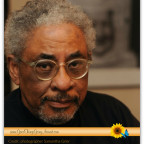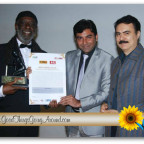CINspirational People
Melvin Grier Shares His Journey
For so many years as a public relations professional has spent a lot of time working in and around the media, I have met and been impressed with so many gifted photo journalists. Their lens is their eye to the world, capturing scenes with vivid images no words could do justice.
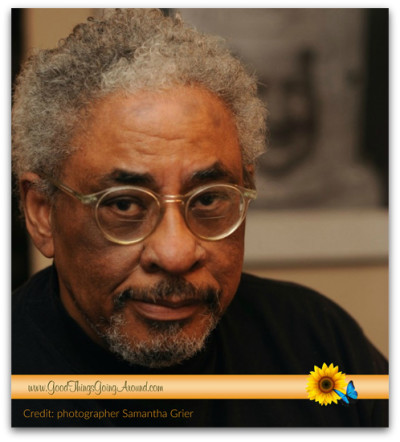 Award winning photographer Melvin Grier has been top on my list. In the days when Cincinnati was home to two daily newspapers, Melvin enjoyed a 33 year career at The Cincinnati Post. His images compellingly took us to places we would never have been exposed otherwise. They shared raw human emotions. They celebrated life. They shared kindness, ugliness, grief and joy.
Award winning photographer Melvin Grier has been top on my list. In the days when Cincinnati was home to two daily newspapers, Melvin enjoyed a 33 year career at The Cincinnati Post. His images compellingly took us to places we would never have been exposed otherwise. They shared raw human emotions. They celebrated life. They shared kindness, ugliness, grief and joy.
Revisit Melvin’s journey in a very special new exhibit called White People: A Retrospective at the Cincinnati Art Beyond Boundaries Exhibit Venue (1410 Main Street in Cincinnati’s Over-the-Rhine) running from this Friday through May 13, 2016. There will be a FREE opening reception on Friday (March 25) from 6 to 9 pm with wine and hors d’oeuvres.
White People: A Retrospective
The photography exhibit is an encore show that was first shown in 2011 at the Kennedy Heights Arts Center. It is a forerunning installation of FOTOFOCUS 2016.
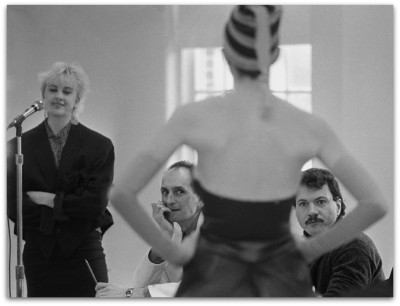
One of Melvin Grier’s photographs that will be on exhibit at the Cincinnati Art Beyond Boundaries Gallery art exhibition venue in Over-the-Rhine.
Melvin told me the idea for the show evolved from a conversation he had with his daughter, photographer Samantha Grier. She was working for the Hamilton Journal at the time and made an observation. She noticed that at many of her assignments, she was the only black person there. It got Melvin thinking, and actually he had the same experiences.
The exhibition will highlight a collection of photos that were taken during his career at The Cincinnati Post. You may recognize some. You may recognize their story. You probably will be moved.
Let’s get to know Melvin.
Lisa: Where did your love for photography come from?
Melvin: I was in the air force stationed in England, about an hour train ride from London. I remember going to London to take pictures when I could, and develop them in a hobby shop with a dark room. I entered a military photography contest called Stars and Stripes, and won first place. I taught myself. My first love was fashion photography but I discovered journalism photography and later decided to make it a career.
Lisa: Tell us about one of your experiences as a photojournalist that moved you.
Melvin: One of my assignments at The Post was going to Africa with a local group during a civil war. I went with Reporter Lisa Rose Cardillo. I remember getting on the flight and seeing the entire crew was black, and getting to Nairobi and feeling like everyone looks like me when I got off the plane.
The whole experience was very meaningful. I saw people running around with automatic rifles. When we went to a clinic, I saw children who were skin and bones. You have to be a professional and not let your emotions get involved. I wished I could have done more. I went to an orphanage, and there were so many beautiful babies. I remember picking one up and thinking I wanted to take it back to Cincinnati.
I knew that my job there was to create the best photographs I could so that people here could see what I saw. I wanted the reader to see things that were accurate. It was my obligation.
Lisa: Your daughter, Samantha Grier, is also a very talented photographer. How do you feel about your daughter following your path?
Melvin: Samantha reminds me that I was very lucky. I came to work at a newspaper when they were sort of thriving. There was a downward trend during my career. Young people today face a whole different set of circumstances up to and including that there are no jobs. For anyone who aspires to be a journalist, I know you don’t get into it to get rich. It is something you do out of a sense of wanting to contribute.
Lisa: What is the best advice you have ever received?
Melvin: Ben Klein, one of the owners of a printing company I had worked for, had one standard. That was excellence. I remember how he would say that everything we did represented his company, whether it was a free job or not. I learned a lot from him. I know that everything that I shoot as a photographer is far from perfect but I try to make everything as good as I can make it.
Lisa: There is a poem that you read to people a lot. Tell us about it.
Melvin: It is a poem by James Baldwin from a book called Nothing Personal that has a lot of meaning to me. For me, it reminds me that my job as a photographer is to witness things so that people who could not be there for future generations would have a record of it. That was my responsibility, to document things and people.
For nothing is fixed
Forever and forever and forever
It is not fixed
The Earth is always shifting
The light is always changing
The sea does not cease
to grind down rock
Generations do not cease
to be born
and we are responsible to them because
We are the only witnesses they have
– James Baldwin
#GoodThingsCincy
CINspirational People: Jennifer Holladay
Yesterday I was at the Cincinnati Association for the Blind and Visually Impaired (CABVI) for an event and saw a woman who always has a way of making me smile when I see her. Jennifer Holladay has worked for CABVI for more than nine years. She is the agency’s talking book and One-on-One volunteer coordinator. I first met her when CABVI was one of my public relations clients, and I last ran into her (before today) when our seats were next to each other for the Broadway show, Kinky Boots. For me, I think two of her most distinct qualities are her laugh (which she does a lot of) and her genuineness in listening to what you have to say. She just always brightens my day.
In case you are unfamiliar, CABVI provides counseling, rehabilitation, information and employment services to people of all ages in a nine county area. Through all of its programs and services, it strives to help those who are blind, visually or print impaired lead independent lives. Its One-on-One Program matches volunteers  with agency clients to assist with a number of different needs such as writing checks, organizing paperwork, reading mail or other items, and labeling groceries. Jennifer said she currently has close to 200 volunteers she manages in her program.
with agency clients to assist with a number of different needs such as writing checks, organizing paperwork, reading mail or other items, and labeling groceries. Jennifer said she currently has close to 200 volunteers she manages in her program.
I asked Jennifer some questions to get to know her better. Please read her answers below.
Lisa: What is the greatest part for you about your job?
Jennifer: One of my favorite parts of my job is bringing out the strengths and talents of volunteers and helping them find an opportunity that fulfills something in their hearts. For me, when volunteers and clients come to me and share stories of attending each other’s weddings or other special events in their lives that is so rewarding. I have a volunteer who comes to mind who began because she wanted to read to someone. Last year when her client passed away, she told me, she never knew that she would meet her best friend in a nursing home.
That is why I love what I do. In the end, what keeps me doing what I do is the relationships that have been built and knowing I helped in some way.
Lisa: What type of impact have you seen from your program to your clients?
Jennifer: I have seen a big impact. If someone has a huge stack of mail that has gotten backed up because it takes that person a long time to go through it all with a magnifier, and a volunteer can come in once a week for an hour, it relieves that person’s stress level. The family too benefits because then they can just be family and not have to worry about whether those tasks are being done.
Lisa: Tell us a little more about Jennifer.
Jennifer: I grew up on a farm in Boone County where we raised sheep and rabbits. I was in 4H for ten years. I have a bachelor’s degree in communications from Thomas More College and last year got my master’s degree in public administration with an emphasis in nonprofit management from Northern Kentucky University. When I am not working, I enjoying reading and getting together with friends.
2015 was an awesome year for me because I graduated from NKU and I bought my first house.
Lisa: Tell us about someone who was a positive influence on your life.
Jennifer: I’d say two of my professors in college, one from Thomas More and one from Northern Kentucky University. At Thomas More, we had a research paper to do and the search technologies were just evolving. My Kentucky history professor would not accept anything less than me doing my own research although he was always there to answer questions that I had. In my master’s program, there was a piece of software that would not work with my screenwriter. Knowing that I needed the class, my professor took the approach, ‘let’s figure this out’ and we ended up using Excel instead as a way for me to complete my work. Both of these professors had a ‘let’s figure this out’ mentality. When one way was not working for me to allow me to complete my task, then they helped to come up with another way. I have always appreciated it when people have gone out of their way to help me succeed.
I have a twin brother, Jason, who is fully sighted. My family too has always expected nothing less from me. My parents always believed there is no reason why my brother and I can’t do the same things.
Lisa: When people think of Jennifer Holladay, how would you like for them to think of you?
Jennifer: I want to be as attentive and understanding as I can be to others. I want people to think of me as someone who always does the best by them that I can.
Arzell Nelson Inspires Through Music And Civil Rights Advocacy
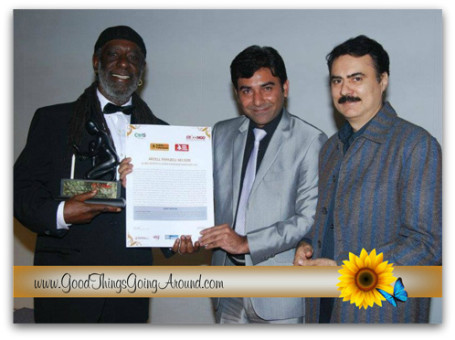
Pictured: Arzell Papazell Nelson receiving the “KARMAVEER PURASKAAR’S” GLOBAL AWARD for SOCIAL JUSTICE and CITIZEN ACTION and NOBEL LAURETTE under the GLOBAL ARTISTES 4 CHANGE MUSIC category for 2011.
How often it is that we find out how very little we actually know about the details of many of the people who are loosely part of our lives. One great benefit for me to writing this blog is getting the opportunity to learn about those stories.
Arzell ‘Papazell’ Nelson is one of those people in my world. We have been ‘connected’ as Facebook ‘friends’ for more years than I can remember; but I am finding out there is so much to this man who has politely offered encouraging words that needs to be told. I am awe struck at the accomplishments of a man who, up until now, has been under my radar.
A composer, playwright, musician, music promoter, civil rights advocate, mentor, leader, and family man, what Arzell has achieved, what he stands for, and the example he sets truly needs to be told proudly and widely.
It struck me as very humbling how his answer to my question about his proudest accomplishment was unequivocally his being honored locally (just one of many) in 1981 with the Kool Jazz Festival Award, Dino Santangelo Award and the Ohio Valley Jazz Award. This may sound huge to anyone reading this, but take into account this is a man who, in 2011, flew to India where he accepted the “KARMAVEER PURASKAAR’S” GLOBAL AWARD for SOCIAL JUSTICE and CITIZEN ACTION and NOBEL LAURETTE under the GLOBAL ARTISTES 4 CHANGE MUSIC category. Arzell also has been given the key to our city by three different Cincinnati mayors, was recognized twice by Ohio’s Governor George Voinovich by proclamation for his civic leadership, and was recognized by the Shreveport, La. Ukraine’s Department of State and the AFL-CIO. President Bill Clinton wrote him two letters of appreciation for Arzell’s work in human relations.
What caused this internationally respected leader to be so proud of that Kool Jazz Award? It was presented to him for his musical score and show, ‘Little Boy Jazz’ performed at the Playhouse in the Park Marx Theatre which most importantly to him included his daughter and son playing lead roles, and many School for Creative and Performing Arts (SCPA) students performing alongside them.
Truly, this is a man with a huge heart for changing the world beginning with the young, impressionable minds of youth.
The evolution
Arzell’s childhood came at a time when segregation was still very familiar. When his family moved from the West End to East Walnut Hills, they were the first black family on the street. It was many years later – in 1973 – when he joined the Cincinnati Human Relations Commission and was charged with reducing juvenile delinquency in the first neighborhood he knew.
He asked his boss, Executive Director Virginia Coffey, “What do you want me to do?” Her answer is what pretty much has changed the course of Arzell’s life. “Whatever you can do to keep kids off the street,” he told me he replied.
Music was part of his entire family. It was one of his great memories growing up. And so, with this task, Arzell began organizing workshops with a borrowed electric piano. Attendance took off and soon he began writing songs for his students to perform.
“I didn’t really have a plan in terms of pursuing music,” Arzell told me. “It just happened.”
One morning he saw Sammy Davis Jr. show support of President Nixon on television. It upset Arzell and moved him to write a musical, Straighten Out Sammy. He put together a group of local singers and actors and was getting about 300 people to show up for performances. That led to Arzell’s group, the Corporation of Truth, which played Cincinnati’s first Martin Luther King concert.
And from there, this man who has been under my radar all this time, went on to write over 300 songs and more shows. He has recorded at Columbia Records; promoted concerts of big names; and opened up on stage for well known artists such as Philip Bailey, George Dukes and Freddie Hubbard.
Through it all, he has continued his pursuit of social justice. His career with the Cincinnati Human Relations Commission spanned 25 years, ending with him in the role of executive director. He also served as a cultural/ethnic diversity consultant. He has been with programs such as Share Food, which involved food distribution to poor and working class citizens at minimum cost; and was also involved with ‘Back on the Block’, a program offering education, recreation and employment opportunities to youth.
Currently Arzell is working on a film documentary and television series called, ‘Don’t Count Me Out’ that will address the issue of violence against women and children.
I asked him about an experience that touched his life. He shared with me a time when he called home to his dad from college asking for money. “I said, ‘dad, I need $50,” Arzell told me, “and my dad told me, ‘Oh you do? Tell you what, call me back in a couple days to let me know how you are doing.’
“I ended up getting the $50 on my own and I remember that I was so proud,” he continued. “I called my dad to tell him and he told me, ‘Great, I am so proud of you.’ Dad taught me to look out for myself and that put me on my right track of believing in myself and my abilitiess.”
Yes, Arzell, you definitely have abilities. And I am so glad that I learned about them!
Please click here to listen to a sample of Arzell’s music.
#GoodThingsCincy
Jenny Berg Fulfills Her Passion
I have always loved this quote from Howard Thurman: “Don’t ask yourself what the world needs; ask yourself what makes you come alive. And then go and do that. Because what the world needs is people who have come alive.”
It is a question Jenny Berg asked herself; and the answer she came up with has lead her on a journey of empowering those whose work and missions are enhancing communities and lives throughout our region.
Jenny is the executive director of the Leadership Council, an organization that helps human services executives of non-profit organizations to strengthen their leaders, their relationships, their impact and ultimately the greater community.
Prior to her current position, she served a two-year role as president of the Board for Impact 100, a women’s grant making organization founded in Cincinnati in 2001 which has awarded over $3.2 M back into our community through grants of at least $100,000. She returned as a board member this year after serving on the board 2006-2012. She is also treasurer of the National Board of the Women’s Collective Giving Network, an association which supports the creation, development, and expansion of women’s collective giving nationwide.
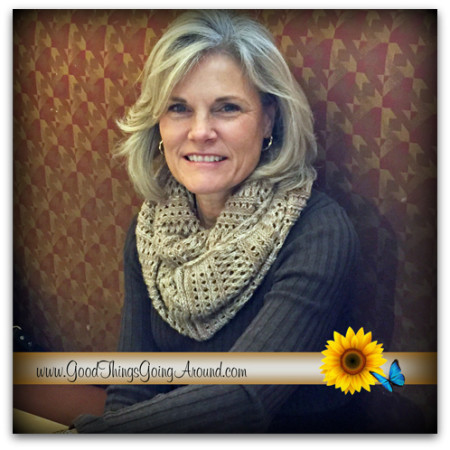 Jenny also currently serves as treasurer of the board of Women Helping Women; and on the Advisory Board of Flywheel Cincinnati, the Advisory Council for Xavier Universities MBA Private Interests & the Public Good Program, and the Pastoral Council Advisory Board of the Archdiocese of Cincinnati. In the past she served on the board, and as board chair of Tender Mercies & Ursuline Academy, and she is an alumni of the Leadership Cincinnati Class #35, serving as co-chair of the Securing the Future Conference.
Jenny also currently serves as treasurer of the board of Women Helping Women; and on the Advisory Board of Flywheel Cincinnati, the Advisory Council for Xavier Universities MBA Private Interests & the Public Good Program, and the Pastoral Council Advisory Board of the Archdiocese of Cincinnati. In the past she served on the board, and as board chair of Tender Mercies & Ursuline Academy, and she is an alumni of the Leadership Cincinnati Class #35, serving as co-chair of the Securing the Future Conference.
Please learn more about Jenny below.
Lisa: You have accomplished so much with your drive to enhance our local charities. Where does that passion come from?
Jenny: I had early exposure to philanthropy and giving back from my parents. My father served on a number of boards, and was always helping out with his time, talent and treasure. Even though I didn’t really understand what it was all about, I knew that he was helping people. And my mother always supported him in his work and was involved in quiet ways.
As an adult, I have always looked for opportunities to give back. During my term serving on the board of Tender Mercies, going through the grant process with Impact 100 (Tender Mercies received a $184,000 grant from the organization) opened my eyes to what other nonprofits are doing. I wanted to lend my expertise there, and as I became more and more involved, it was becoming clearn that this is where I wanted to be spending my time.
Lisa: What is some of the best advice your parents’ gave you?
Jenny: They instilled in me the philosophy, ‘To whom much is given, much is expected’ philosophy. They taught me that it is our job to give back to our community and leave it a better place than we found it.
Lisa: Have any of your children followed in your path?
Jenny: My middle daughter, Emily Schmidt, is also a member of Impact 100 and volunteers in helping to share their message through social media.
Lisa: What is some advice that you give others?
Jenny: I encourage people that it is never too late or too early to pursue your dreams. There is always an opportunity to reinvent yourself. Sometimes it is good to take a break from what you are doing and reassess to see if there are other opportunities for you. Oh yes, and always give back.
Marty Polk Inspires By Example
Marty Polk has smiled at me and asked me about my day more times than I can count. No matter what I am doing or where I am on the exercise floor at the TriHealth Fitness Pavilion, I can’t help but notice him. Holding a towel in one hand, his eyes are drawn to people like magnets. His is that familiar face that always  carries a smile, inviting everyone to take up conversation. Marty knows no strangers there. His is everybody’s friend. On a day when there is no sunshine, he brightens it just by being present.
carries a smile, inviting everyone to take up conversation. Marty knows no strangers there. His is everybody’s friend. On a day when there is no sunshine, he brightens it just by being present.
I had known that Marty was a retired police officer but not much more. After sitting down with him and his son, Martin, I developed a whole new level of admiration and respect.
For 30 years Marty was a plain clothed officer working in the Cincinnati Police Department’s park unit. Often his job was undercover, helping to bring to justice the people selling drugs. But there is much more to his story than searching for the bad guys.
On those days when he walked Cincinnati’s parks, he was also on the lookout for those needing a step up. Marty had a reputation for fairness and integrity. He wanted to help people he met who were down on their luck. “I wouldn’t give them money,” he told me. “I would take them to White Castle or someplace else to get them something to eat, or I would bring them food or coffee. As long as they tried, I was always helpful to them.”
I am willing to bet Marty paid for this out of his own pocket. He was also known for taking people who were homeless to the Drop Inn Center or another agency like the Salvation Army.
Those acts of kindness changed and empowered lives. Several individuals even came back to tell Marty he turned them around from a path headed toward destruction, saved them.
“It is why I wanted to be a police officer,” he said. “We are here to help people. I always tell people to try and do the right things, be positive and return favors to others. When I know I have helped someone, it makes me feel good inside. It shows that police officers can do more than just be police officers. We can take care of people.”
But Marty’s story has taken a turn since those days walking the Cincinnati Parks. Just three months past his retirement, January 18, 2012 to be exact, he had a stroke that took away use of his entire right side…and one of his greatest gifts, his speech. He was hospitalized for three months, during which his family never left his side. He endured a rigorous schedule of therapies that detoured when he coded three separate times from a blood pressure drop. He battled long and hard. Ultimately Marty’s journey took him from a wheelchair to a cane to being able to exercise three days a week….with enough energy left over to greet everyone with whom he comes in contact. His trainer has him spend 30 minutes on the elliptical machine, ride the stationary bike for 5 miles and walk a mile in less than a 15 minute stride.
Since his stroke, Marty has even become a seasoned 5K participant, having walked in two Flying Pig races, the American Cancer Society 5K, and the NFL Hall of Fame Walk.
“He is my best friend and role model,” Martin said sitting next to his father.
Lisa: What are some life lessons you have taught your sons?
Marty: I always have taught them that when you approach people, you call them ‘Yes Sir’ or Yes Ma’am’. I try to teach my sons the way my father taught me to be honest, have integrity and do the right things in life.
Lisa: What do you hope you impact will be?
Marty: I like to inspire people. It is the reason why I try to speak to everyone to see how their days are going because not everyone has good days. But you’ve got to keep fighting to maintain what you have got.
#GoodThingsCincy
